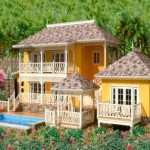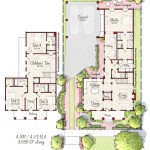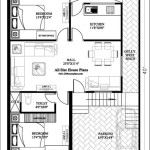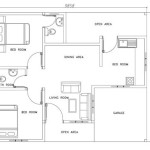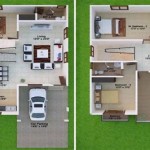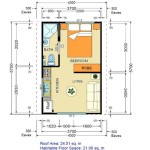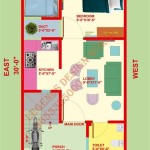How To Draw Up Plans For A Sunroom
Planning a sunroom involves a series of critical steps, from initial concept to finalized blueprints. A well-structured plan ensures the project aligns with homeowner expectations, adheres to local building codes, and remains within budget. The process begins with defining the purpose of the sunroom, selecting the appropriate location, and culminates in detailed construction documents necessary for obtaining permits and guiding the building process.
The absence of a coherent plan can lead to various complications, including cost overruns, design flaws, and project delays. Therefore, a meticulous approach to planning is paramount for a successful sunroom addition. This article will provide a structured guide to the essential elements involved in drawing up sunroom plans.
Defining the Purpose and Functionality
The initial step in planning a sunroom is defining its intended use. This decision significantly impacts the design choices. Will the sunroom serve as a relaxation space, a dining area, a home office, or a combination of functions? Understanding the intended use guides decisions regarding size, layout, materials, and features. For instance, a sunroom intended for dining will require adequate space for a table and chairs, while a sunroom designed as a home office needs sufficient natural light and electrical outlets.
Furthermore, consider the time of year the sunroom will be used most frequently. This influences insulation requirements and heating/cooling options. A sunroom intended for year-round use necessitates proper insulation and climate control systems. Conversely, a sunroom primarily used during milder seasons may require less robust climate control.
Assess the number of people who will typically use the sunroom simultaneously. This informs the required square footage and seating arrangements. A small sunroom might suffice for one or two individuals, whereas a larger family will demand more spacious accommodations. Consider the need for storage, as this can impact the overall layout and design. Built-in storage solutions can maximize space and maintain a clutter-free environment.
Finally, consider any specific activities that will take place in the sunroom. Will it be used for gardening, reading, playing games, or entertaining guests? Each activity may necessitate specific design considerations, such as adequate lighting for reading, durable flooring for gardening, or ample seating for entertaining.
Site Evaluation and Design Considerations
Once the purpose of the sunroom is clearly defined, the next step involves evaluating the proposed site. Factors to consider include sun exposure, existing structure, soil conditions, and local building codes. Sun exposure is a critical determinant of the sunroom's orientation and glazing choices. A south-facing sunroom will receive the most sunlight, while a north-facing sunroom will receive the least. East- and west-facing sunrooms offer varying degrees of sunlight depending on the time of day.
The relationship between the sunroom and the existing structure is also essential. The sunroom should integrate seamlessly with the house's architectural style and structural integrity. Consider the location of doors and windows that will connect the sunroom to the existing living space. The connection should be convenient and aesthetically pleasing.
Soil conditions are a crucial factor that can affect foundation design. A geotechnical engineer may be required to assess the soil's load-bearing capacity and stability. This information will inform the foundation design and ensure the sunroom's structural integrity. Consult local building codes and regulations regarding setbacks, height restrictions, and zoning requirements. Non-compliance with these regulations can lead to costly delays and revisions.
The design of the sunroom should also take into account the surrounding landscape. Consider views, privacy, and potential noise levels. Strategic landscaping can enhance privacy and minimize noise pollution. The design should also consider the impact on existing trees and vegetation. Preserving existing trees can add to the aesthetic appeal of the sunroom and enhance its natural character.
Material selection is also a key design consideration. The choice of materials should reflect the sunroom's intended use, architectural style, and budget. Consider the durability, maintenance requirements, and aesthetic appeal of different materials. Common materials for sunrooms include wood, aluminum, vinyl, and glass. Select materials that are resistant to moisture, UV radiation, and temperature fluctuations. The choice of glazing is particularly important, as it affects the amount of sunlight, heat gain, and insulation.
Creating Detailed Plans and Specifications
After defining the purpose, evaluating the site, and considering the design elements, the next step is to create detailed plans and specifications. These documents serve as a comprehensive guide for the construction process and are essential for obtaining building permits. The plans should include floor plans, elevations, sections, and details.
The floor plan illustrates the layout of the sunroom, including the location of walls, doors, windows, and fixtures. It should also indicate dimensions and square footage. The floor plan should be drawn to scale and clearly labeled. Elevations show the exterior views of the sunroom from different angles. They should indicate the materials used, the roof pitch, and the height of the structure. Sections provide a cut-away view of the sunroom, revealing the internal construction details. They should show the framing, insulation, and mechanical systems.
Details are enlarged drawings that illustrate specific construction elements, such as window flashing, foundation connections, and roof overhangs. These details are crucial for ensuring proper construction and preventing water damage. The specifications provide written descriptions of the materials, methods, and standards to be used in the construction process. They should include information about the quality of materials, the installation procedures, and the warranty provisions.
The plans and specifications should be prepared by a qualified architect or designer. They possess the expertise and experience necessary to create accurate and comprehensive construction documents. They can also assist with obtaining building permits and coordinating with contractors. The plans should comply with all applicable building codes and regulations. A structural engineer may be required to review the plans and ensure the structural integrity of the sunroom.
Include a detailed schedule of materials, outlining the type, quantity, and cost of each material required for the project. This list should be as comprehensive as possible to minimize unexpected expenses during construction. Accurate cost estimation is crucial for maintaining the budget, and it is recommended to obtain multiple quotes from different suppliers. Finally, include a section on environmental considerations, outlining any measures taken to minimize the environmental impact of the sunroom. This may include the use of sustainable materials, energy-efficient design features, and proper waste disposal methods.
The detailed plans and specifications serve as a roadmap for the construction process, ensuring that the sunroom is built according to the homeowner's vision and meets all necessary safety and regulatory standards. Investing in a well-prepared set of plans and specifications is a crucial step in ensuring a successful and enjoyable sunroom addition.

Design Elements Sunrooms Home Remodeling Plan Examples Architect Sunroom Vector Stencils

House Plans With Sunrooms Or 4 Season Rooms

Sunroom Plans To Create Before Meeting With A Contractor Livingspace

Top 15 Sunroom Design Ideas And Costs

Sunroom Ideas On A Small Budget Custom Exteriors

Sunroom Design Plans Diy Beautify Creating Beauty At Home

Designing The Inside Layout Of Your Sunroom Global Solariums

5 Ideas For Designing The Perfect Sunroom

How To Design And Plan For A Sun Room American Window S

10 Modern Sunroom Ideas To Spark Your Imagination
Related Posts

